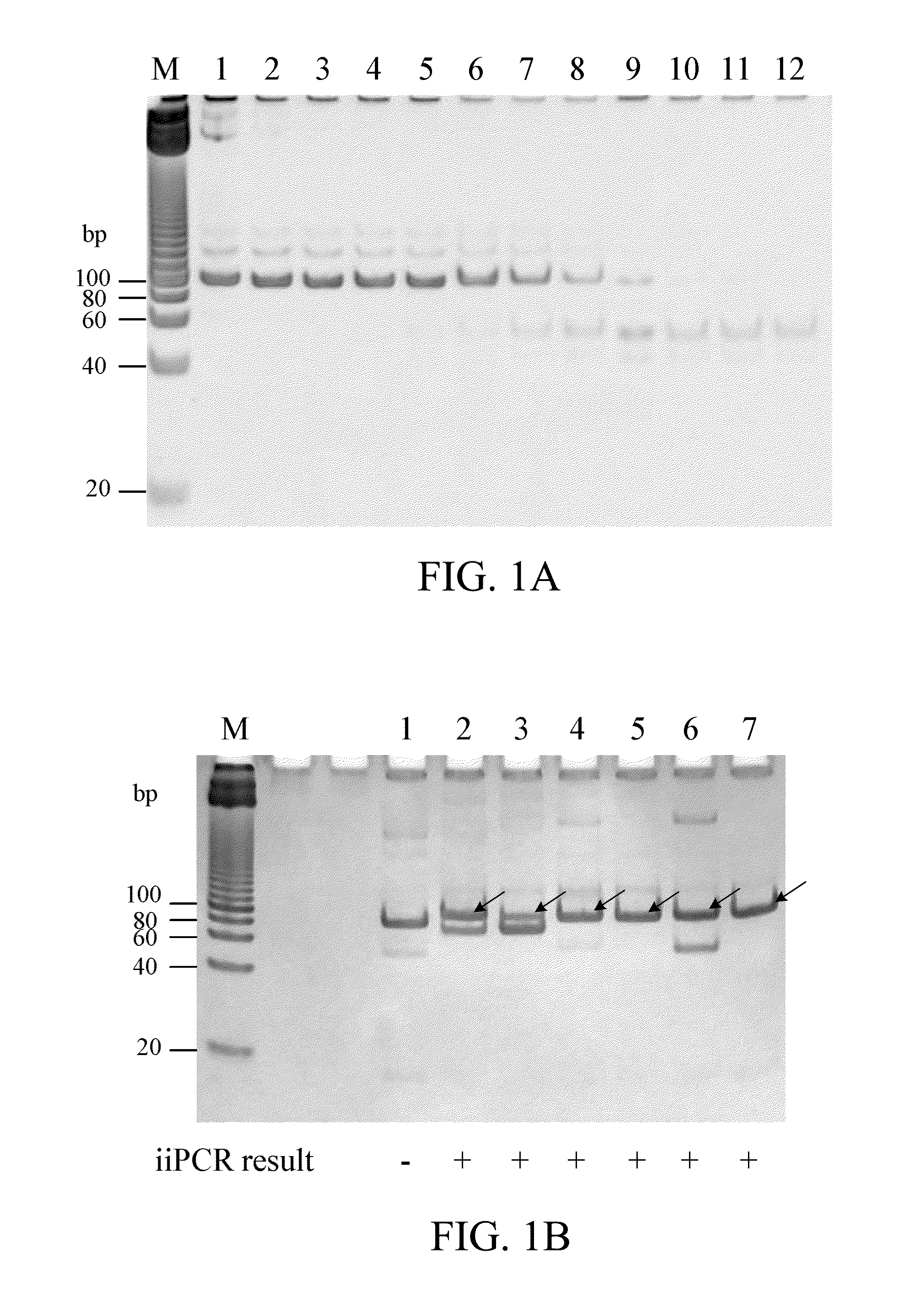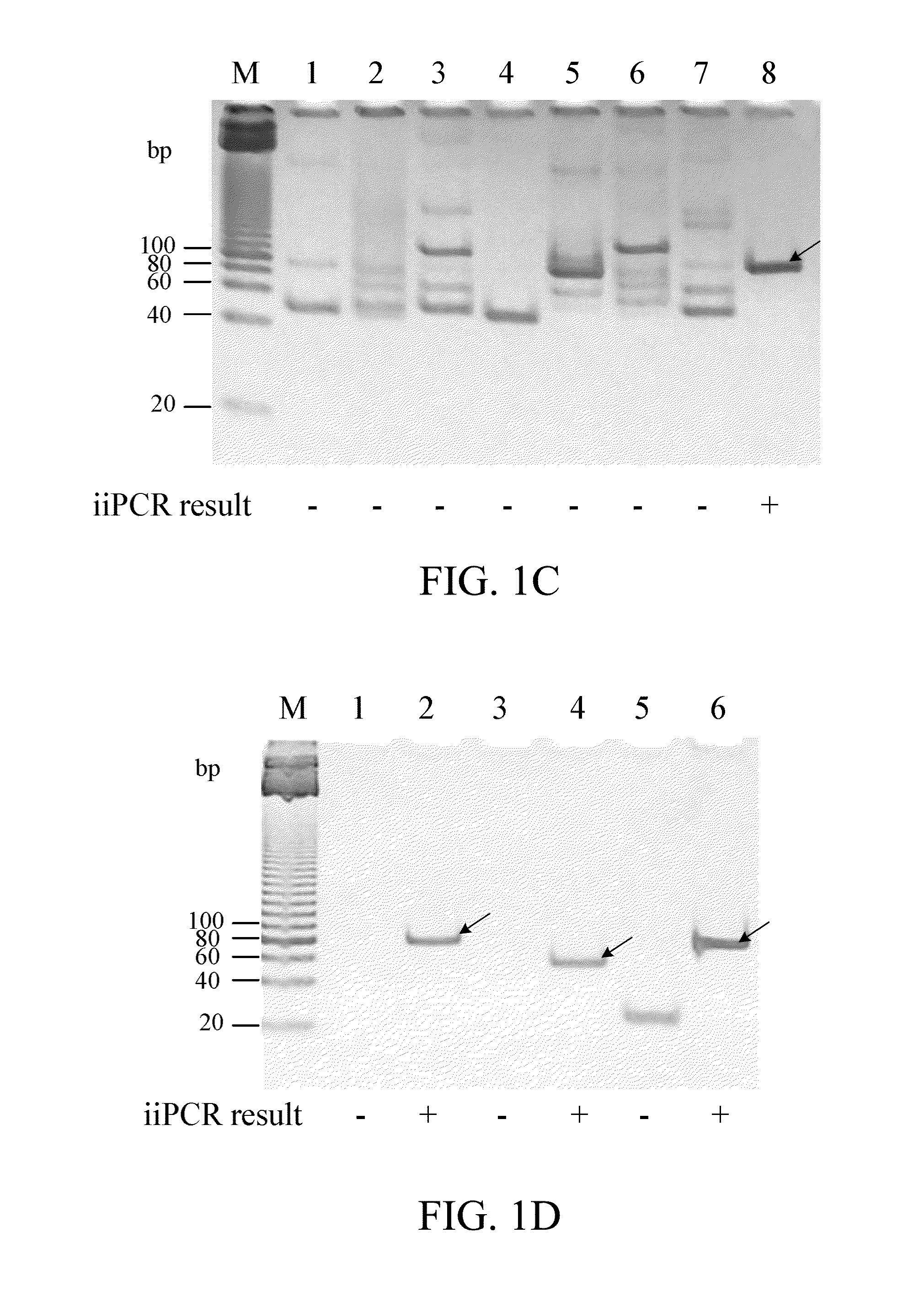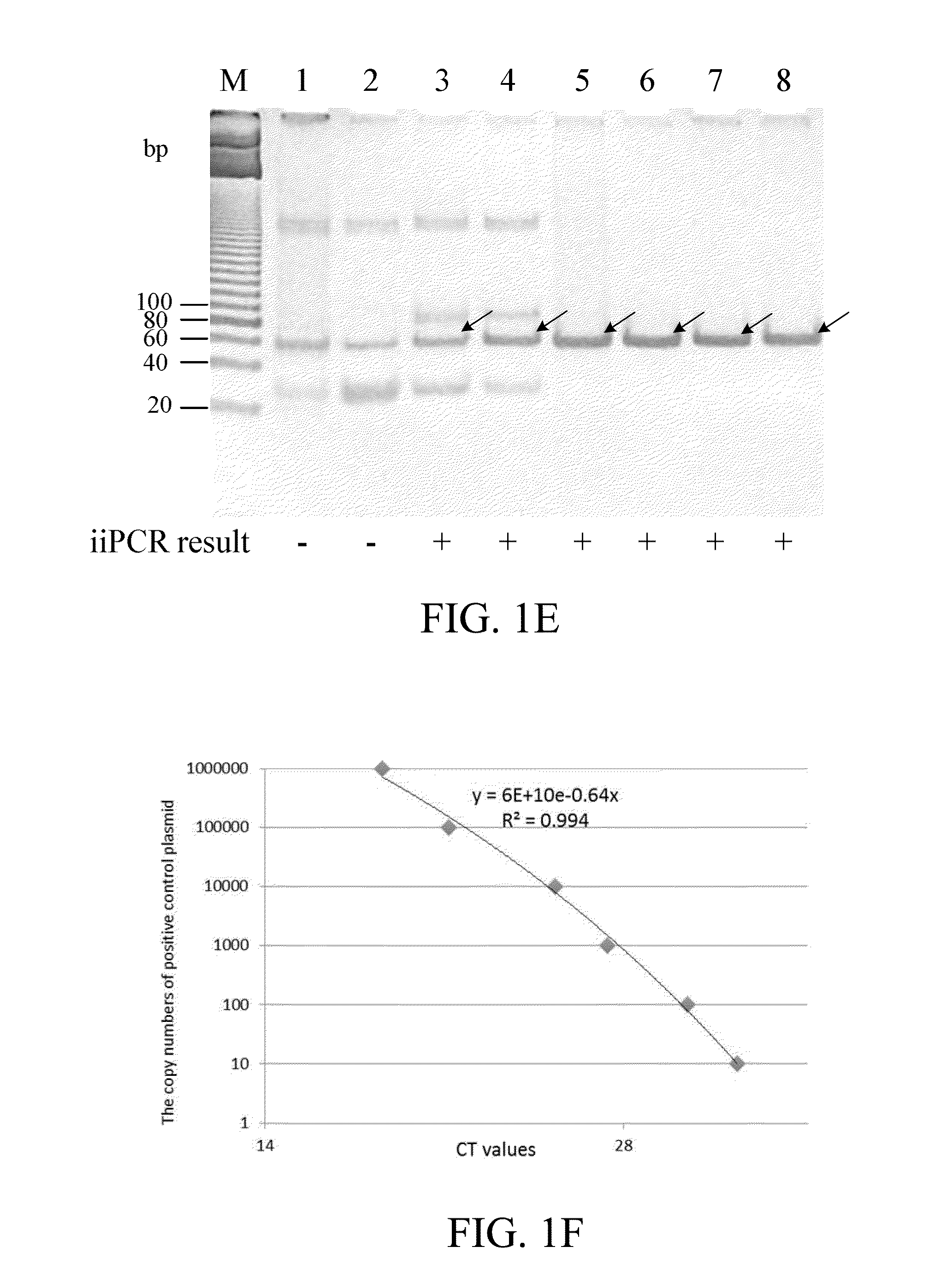Methods for detecting pathogen in coldwater fish
a technology of pathogen detection and oligonucleotide, which is applied in the field of methods and pairs of oligonucleotides for detecting pathogens in coldwater fish, can solve the problems of many hundred million usd a year, and achieve the effect of reducing the negative valu
- Summary
- Abstract
- Description
- Claims
- Application Information
AI Technical Summary
Benefits of technology
Problems solved by technology
Method used
Image
Examples
example 1
Detection of Candidatus Branchiomonas cysticola
[0051]The 16S ribosomal RNA gene of Candidatus Branchiomonas cysticola (GenBank accession No. JQ723599) was inserted in pUC57 cloning vector (Thermo, Mass., US) to obtain pUC57-BC plasmid.
1. Conventional PCR with Primers BCF1 and BCR1
[0052]The 50 μl PCR mixture for conventional PCR contains diluted pUC57-BC plasmid (1010, 109, 108, 107, 106, 105, 104, 103, 102, 101, 100 copies respectively), 0.01-2 μM forward primer BCF1 (SEQ ID NO: 1), 0.01-2 μM reverse primer BCR1 (SEQ ID NO: 2), 0.2 μM dNTP, and 1.25 U Prime Taq DNA polymerase. The amplification was performed in a thermal cycler (such as, but not limited to, PC818, Astec Co. Ltd., Japan) and consisted of one initial cycle of denaturation for 3 minutes at 94° C. and 35 cycles of 30 seconds at 94° C., 30 seconds at 60° C. and 30 seconds of extension at 72° C. The amplicons were analyzed subsequently on a 15% polyacrylamide gel in TAE buffer (40 mM Tris, 20 mM acetic acid, 1 mM EDTA) a...
example 2
Detection of Piscine Reovirus (PRV)
[0066]The segment L1 of piscine reovirus (PRV, GenBank accession No. GU994013) was inserted in pUC57 cloning vector (Thermo) to obtain pUC57-PRV plasmid.
[0067]In addition, in vitro transcriptional RNA template of PRV was prepared by transcribing the DNA sequence of the PRV segment L1 with a commercial kit (such as, but not limited to, MAXlscript® Kit; Thermo Fisher Scientific, MA, USA).
1. Conventional PCR with Primers PRVF1 and PRVR1
[0068]The 50 μl PCR mixture for conventional PCR contains diluted pUC57-PRV plasmid (106, 105, 104, 103, 102, 101 copies respectively), 0.01-2 μM forward primer PRVF1 (SEQ ID NO: 4), 0.01-2 μM reverse primer PRVR1 (SEQ ID NO: 5), 0.2 μM dNTP, and 1.25 U Prime Taq DNA polymerase. The amplification was performed in a thermal cycler (such as, but not limited to, Astec Co. Ltd.) and consisted of one initial cycle of denaturation for 3 minutes at 94° C. and 35 cycles of 30 seconds at 94° C., 30 seconds at 60° C. and 30 secon...
example 3
Detection of Infectious Pancreatic Necrosis Virus (IPNV)
[0079]The segment A of infectious pancreatic necrosis virus (IPNV, GenBank accession No. AY379740) was inserted in T&ATM cloning vector (Yeastern biotech, Taiwan) to obtain pTA-IPNV plasmid.
[0080]In vitro transcriptional RNA template of IPNV was prepared by transcribing the DNA sequence of the IPNV segment A with a commercial kit (such as, but not limited to, MAXlscript® Kit; Thermo Fisher Scientific, MA, USA).
[0081]In addition, virus sample from salmon from a fish farm were collected and tested to evaluate the performance of the iiPCR and real-time PCR assays from field samples. The fish in the salmon farms were diagnosed to suffer from infectious pancreatic necrosis virus (IPNV). RNA extraction from tissues was performed by using a commercial kit (such as, but not limited to, FavorPrep™ Viral Nucleic Acid Extraction kit; Favorgen Biotech Corp., Taiwan). The purity of the total RNA was evaluated by measuring the absorbance rat...
PUM
| Property | Measurement | Unit |
|---|---|---|
| temperatures | aaaaa | aaaaa |
| time | aaaaa | aaaaa |
| volume | aaaaa | aaaaa |
Abstract
Description
Claims
Application Information
 Login to View More
Login to View More - R&D
- Intellectual Property
- Life Sciences
- Materials
- Tech Scout
- Unparalleled Data Quality
- Higher Quality Content
- 60% Fewer Hallucinations
Browse by: Latest US Patents, China's latest patents, Technical Efficacy Thesaurus, Application Domain, Technology Topic, Popular Technical Reports.
© 2025 PatSnap. All rights reserved.Legal|Privacy policy|Modern Slavery Act Transparency Statement|Sitemap|About US| Contact US: help@patsnap.com



